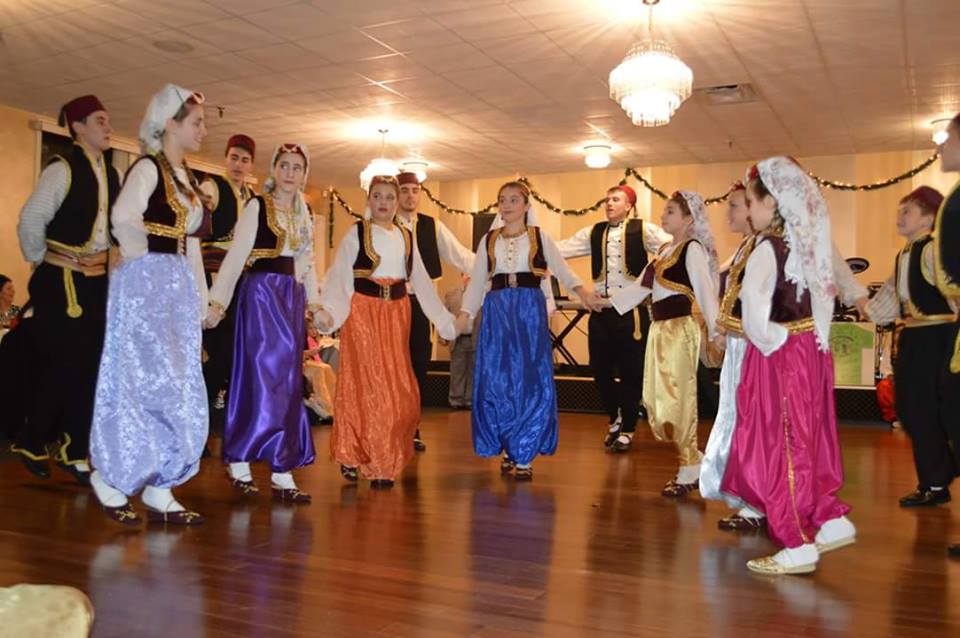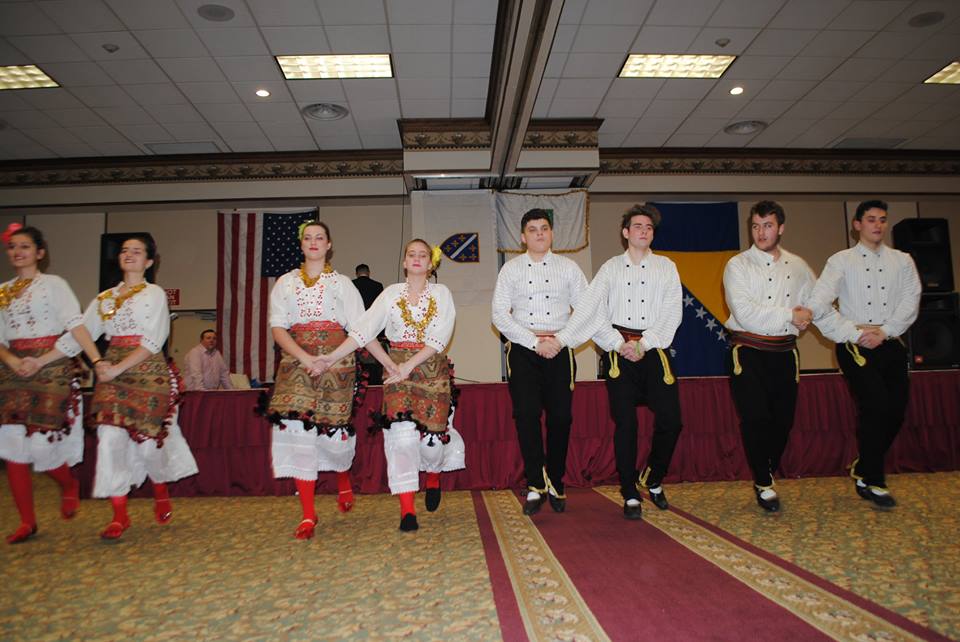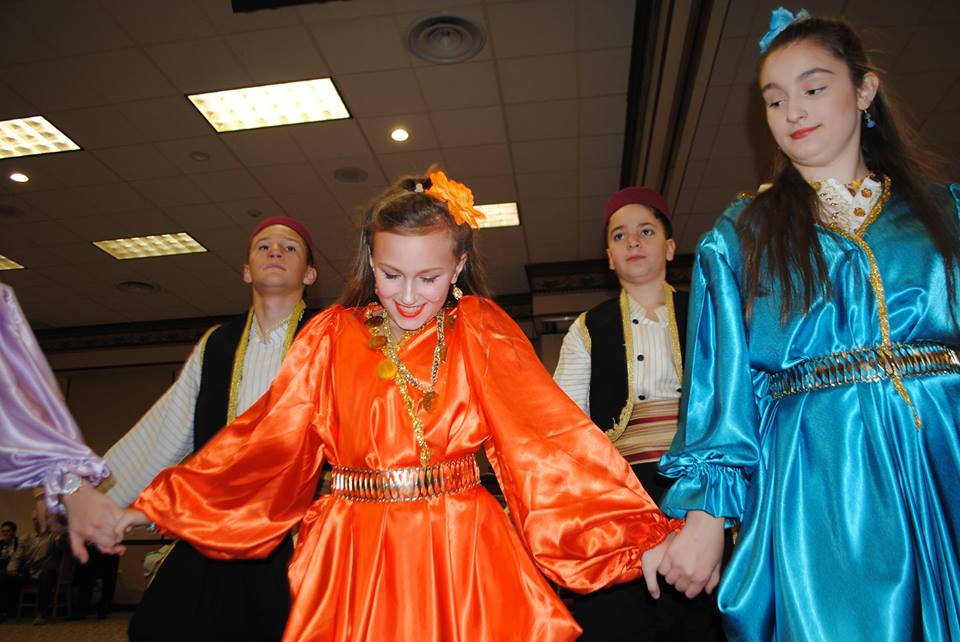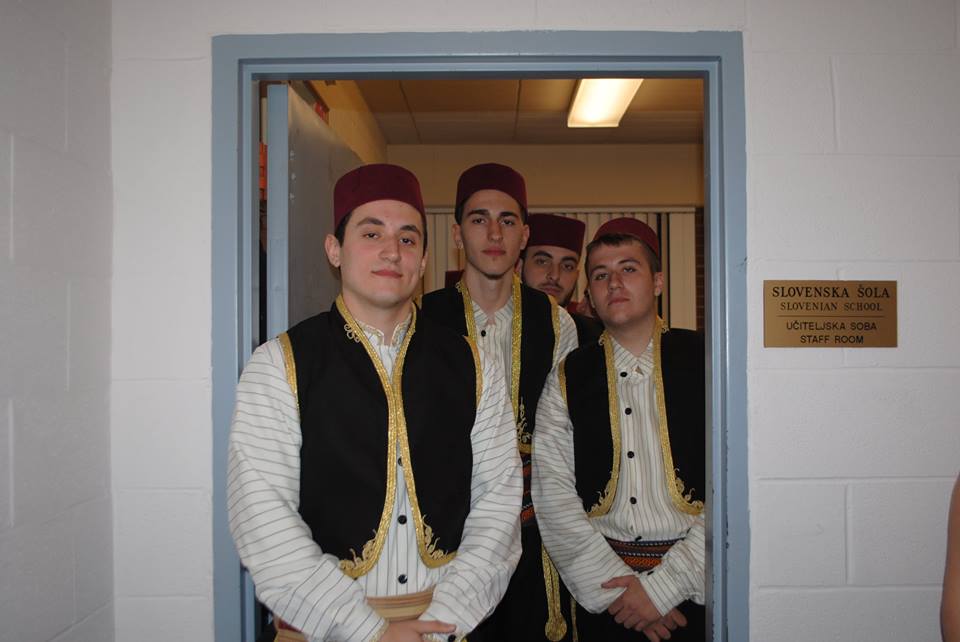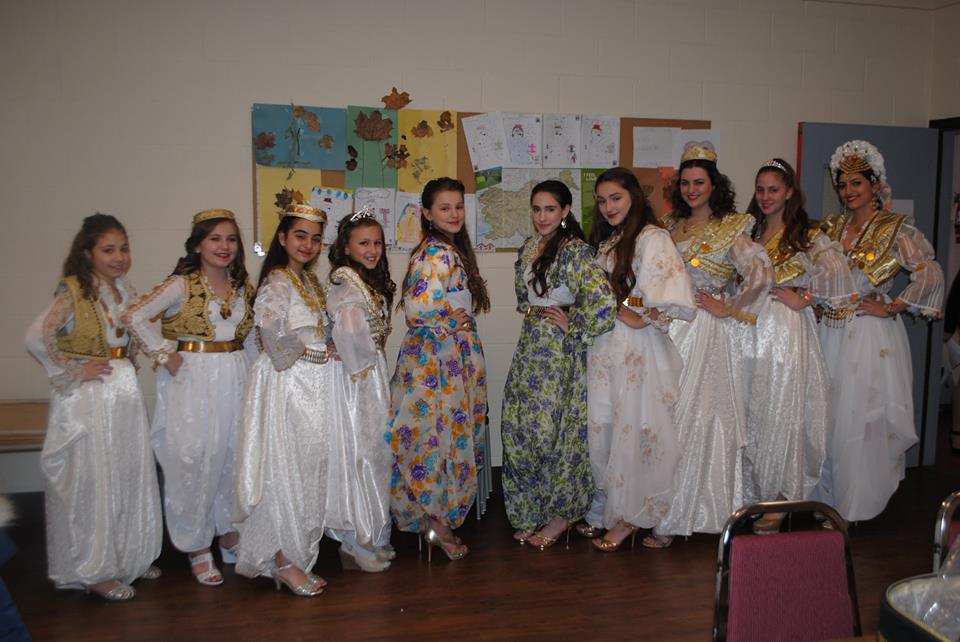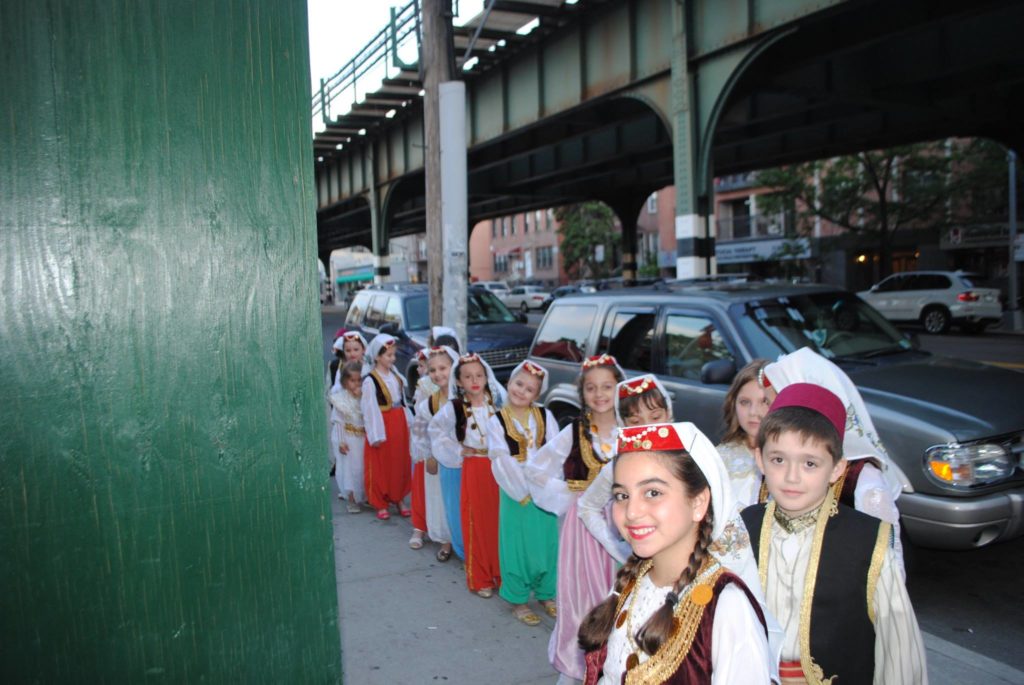On the second floor of a building populated by a driving school, a clothing store, a bar and a pharmacy, children of all ages storm into a ballet studio in Astoria to learn how to dance.
But the kind of dance they practice does not resemble ballet. Instead, the students at Kud Halaturko learn traditional folk dances that originated in Balkan countries such as Montenegro, Bosnia, Albania, Macedonia and Bulgaria.
Led by choreographer Samir Handanovic the students, whose ages range from 5 to 18, practice every Friday and Saturday night to participate in competitions and perform at parties and other functions.
Handanovic, who emigrated to the United States in 1998 from Bosnia, has been teaching traditional folk dance for 37 years. After graduating from a performing arts school and opening his own dance studios in Croatia and Germany, he moved to Idaho to escape a war-torn region of Europe.
He’s been dancing for so long that “I tell my friends I have to go to the hospital to get the folk dance [surgically removed] from me.”
He moved to New York in 2002 after hearing about an opportunity to teach folk dancing to students in Queens. For more than seven years, Handanovic has been the main choreographer at the studio at 31-04 Broadway.
He said he has taught six generations of students dances ranging from Halaturko, a popular Montenegro dance at weddings and the Užičko. For each dance, performers hold hands and dance in a circle while performing intricate footwork.
Each country’s version of folk dancing requires differing footwork and melodies but they also share similarities. The costumes or nosnja worn by the dancers range greatly depending on the region. For Albanian folk dances, performers wear black costumes with gold embellishments.
In Montenegro, the costumes are white with gold accents. The patterns are extremely intricate and Handanovic enlists women from his home country to make them and ship them to the United States.
Though Handanovic is strict with his dancers, he said his teaching style also allows children to feel more connected with their parents’ culture and learn discipline.
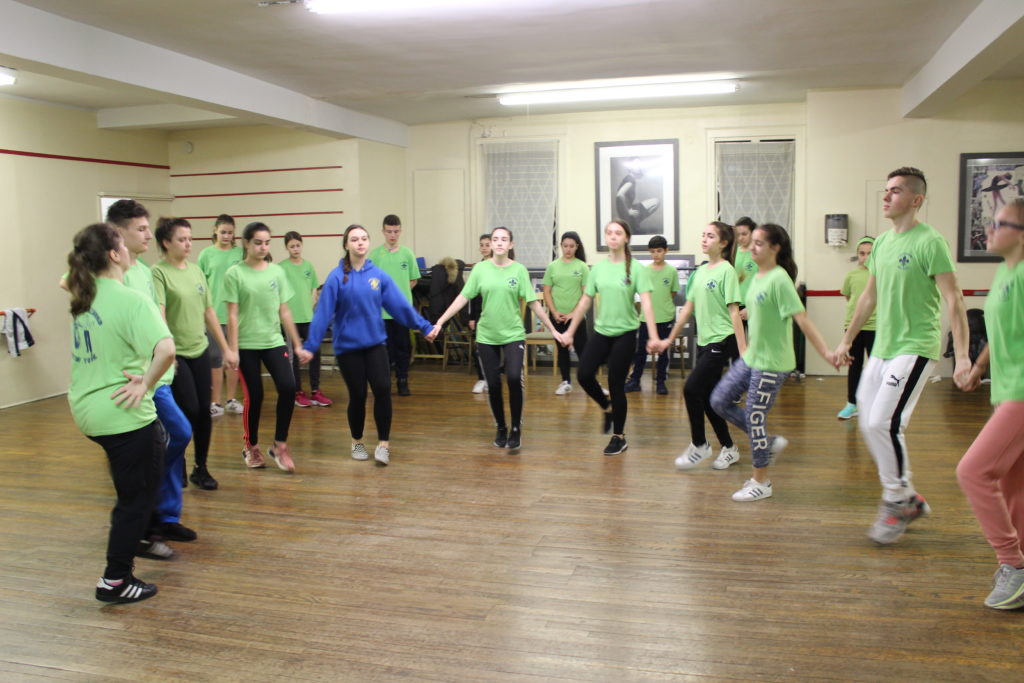
“The children who are coming here they’re learning language, they’re learning culture and they make friends,” he said. “I learned to be strict because when you’re dancing you need to be very, very disciplined. Discipline teaches you [what kind of] person you’re going to be outside. Most of the children, when they finish here, they’re doctors, surgeons. I’m proud of the children.”
Danis Lalicic,16, is from Sunnyside and has been attending practices since he was 10. His family is from Montenegro.
“I found a passion for it,” he said. “Back then when I was little I didn’t really see the point of this but when I started going to weddings and parties and stuff like that I realized why I should keep on going. You get to hang out with people from your own country and get to interact with more people that are from the same place as you and you can bond better.”
The students also participate in national folk dance competitions and have gone to Canada, North Carolina, Pennsylvania and other states to compete against other teams.
Some parents bring two or three of their children to classes and according to Handanovic, some students who met at the classes have gotten married, had children and now bring their kids to his school.
Vahida Murataj has been bringing her 12-year-old daughter Miranda to Kud Halaturko since she was 8 years old.
“She liked dance so we decided to give it a try,” Murataj said. “It’s close to home and it was a nice place to bring her get to know other kids from her culture. We keep our kids off the street. Instead of hanging out on a Friday night on a Saturday night they’re here up to the age of 17 or 18.”
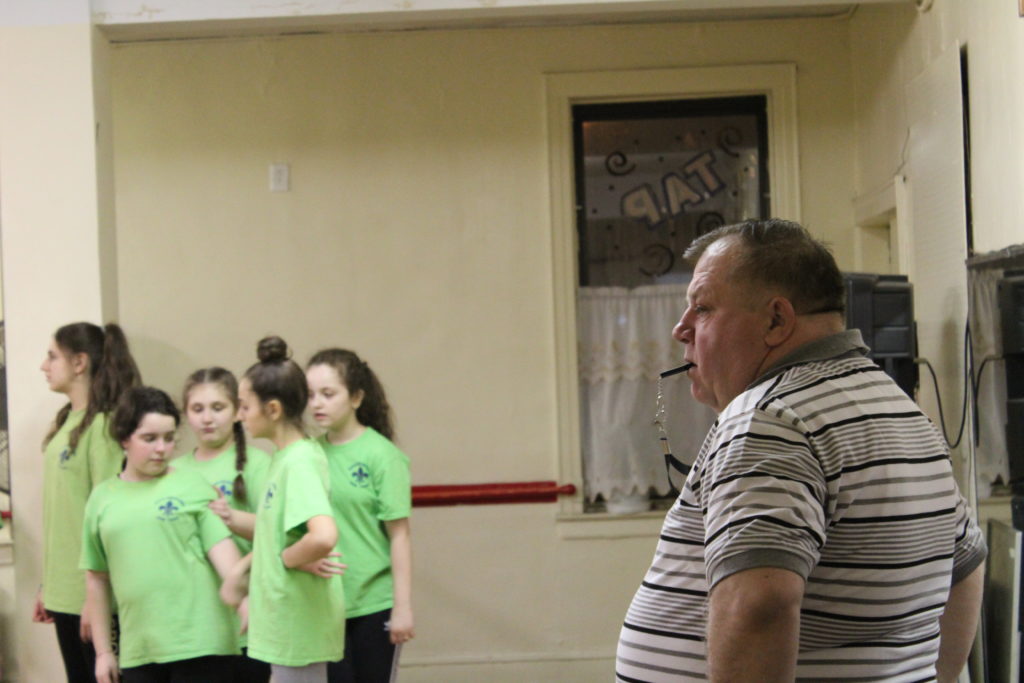
Murataj’s family hails from Montenegro but are ethnic Albanians. Though she does not know how to perform these traditional folk dances, she wanted her daughter to learn.
“You know everyone here and they’re like family,” said Miranda Murataj. “It’s not just like one star or one main person [performing]. Everyone has an equal share.”
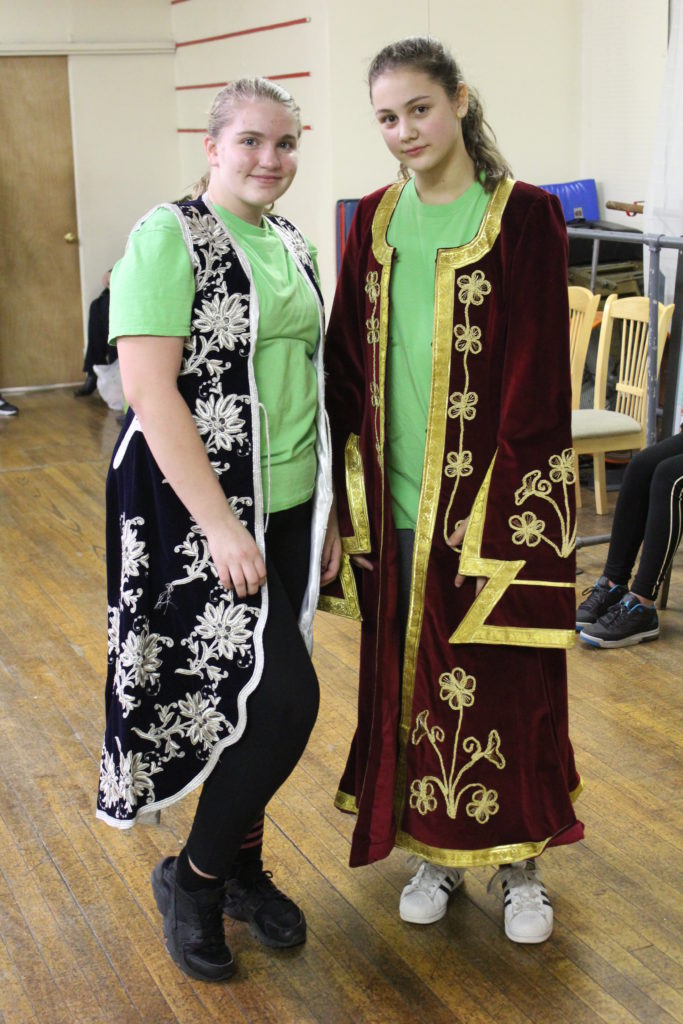
Families also share the expenses needed to operate. They must pay the choreographer, the rent for the space (classes run from September through June but payments must be made year-round), costumes, travel and more.
It can be expensive for parents, especially when they have more than one child in the program. The parents meet three times throughout the season to discuss trips and expenses and to make decisions about whether they can afford to take certain trips.
Indina Cobovic, a Middle Village resident, brings her 13-year-old daughter Melinda to Kud Halaturko. Her daughter began attending classes 4 ½ years ago because she has a passion for dancing.
Cobovic said parents would use additional money to reward students for their hard work.
“Just for doing little things for the kids, maybe a little party here and there,” she said. “They [practice] for about three hours on Friday and three on Saturday so [we want] to just tell them, ‘thank you for your hard work.’”
Murataj has loftier goals. She would like the choreographer and students to have more freedom in terms of how they can use their rehearsal space, upgrades to equipment such as a microphone instead of a whistle to help disciple students and clothes.
“It would be nice to have our own place and it would be nice to not worry if we can go on a field trip,” she said. “Trying to find our own place that would definitely be a plus. [We’d like funding to] upgrade the clothes, [practice] shirts, instead of a whistle getting a microphone.”
It will be Sejla Gutic’s last year participating in this program. Gutic, who lives in Astoria, is 17 and getting ready to go to college. She said she wouldn’t “trade this experience for anything.”
“Before I joined in 2012 I had no idea how to dance,” she said. “I wasn’t really connected with my cousins because traditionally at weddings we do dances that we do here. I would never have fun at weddings because I’d always be sitting down. I wasn’t talking with people, communicating. And now because of this I’m able to ask anybody to get up and dance with me and it’s fun.”
Her favorite part of the program is attending competitions and performances, she said. The group took a bus to North Carolina a few years ago and though the bus broke down, the dancers had a great experience.
“I think the bus was one of the best parts [of this experience],” Gutic said. “We had this big stereo that we just played music from and sang along. And then the bus ended up breaking down but we went through it and it was great. It’s more bonding for us.”
She credits Handanovic as part of the reason the group has been so successful during competitions.
“I don’t want to be conceited or anything but from our culture I think we’re one of the best studios,” she said. “Our teacher, he’s one of the best teachers I could ever ask for. He’s always trying to push us and make us try harder and do better.”
For more information about the program or if you’d like to donate to Kud Halaturko, call 917-547-8424 or email samirosikek@yahoo.com. Donations can be sent to Kud Halaturko at 544 W 50th St. Apt. #2FE New York, NY 11019.

